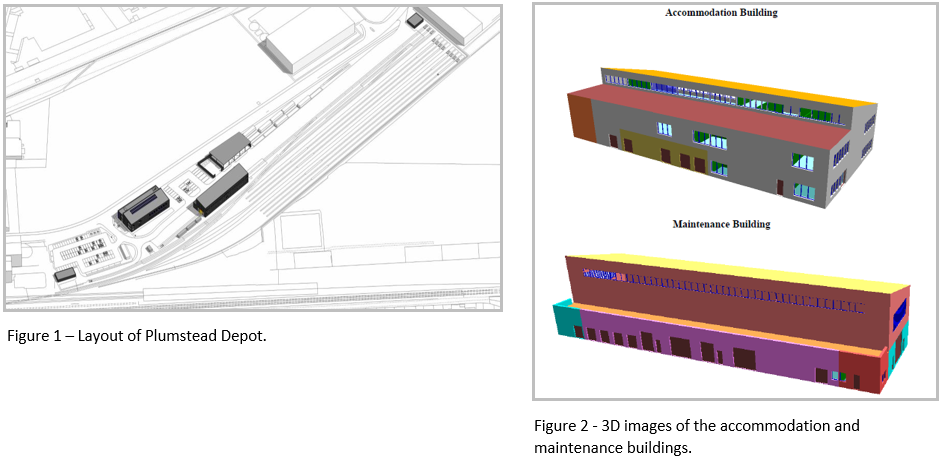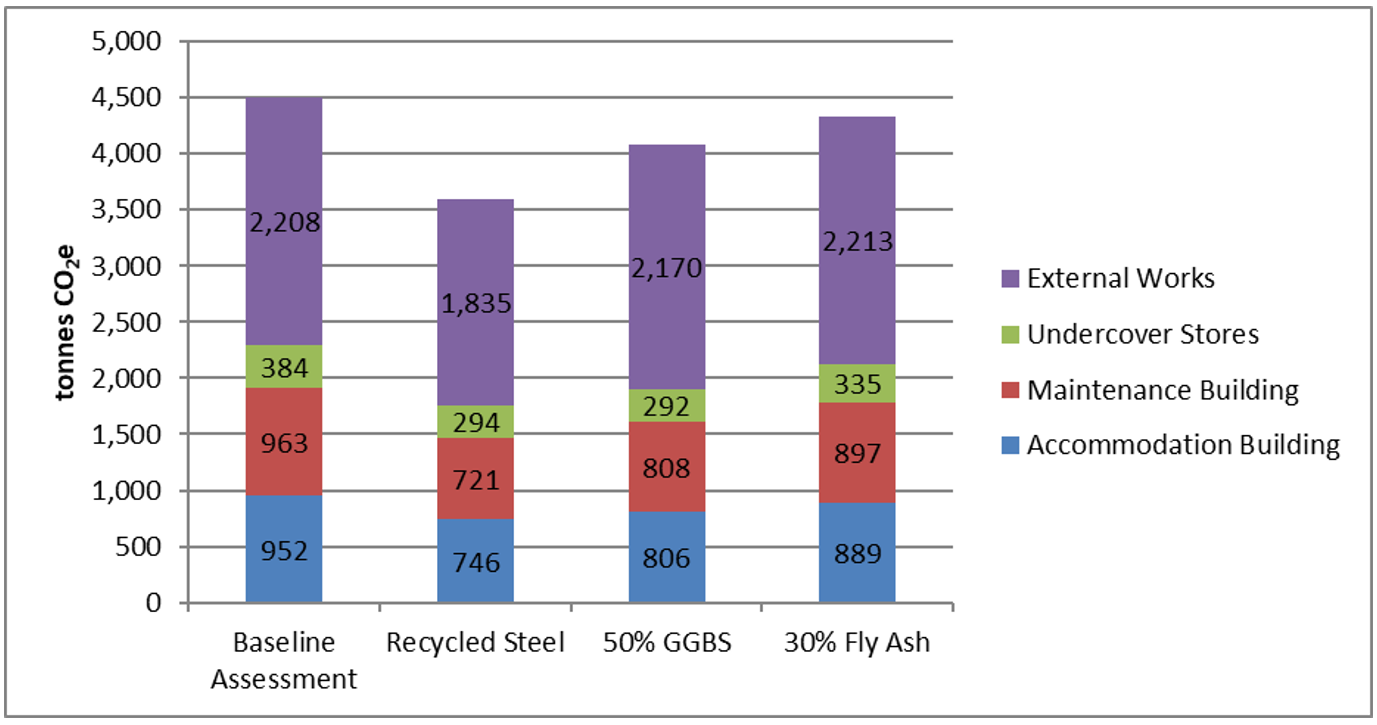Case study: Identifying High Carbon Materials
Company: ATC Joint Venture
What’s the issue being addressed?
The project team required a way to assess the capital carbon in the building designs. This would enable the creation of a framework to identify potential opportunities for carbon reduction during construction and operation. Figure 1 and 2 below show images of the building plans.

How was this solved?
A baseline embodied carbon assessment was undertaken using Crossrail RIBA stage F Bill of Quantities as the data source and then fed into the RSSB Rail Carbon Tool. When carrying out this process, assumptions on material specifications were made where necessary to ensure consistency and accuracy of the assessment.
The assessment calculated the embodied carbon and costs associated with the construction materials, allowing the design team to take the embodied carbon of materials into account when specifying and recommending materials. The baseline carbon assessment calculated the detailed design carbon emissions for the maintenance building, accommodation building, undercover stores and associated external works and was normalised against the floor area.
Although the carbon assessment was undertaken as a baselining exercise after the proposed design had been finalised, value was still added to the project. High impact carbon materials were identified and it was calculated that substituting general concrete and steel with ground granulated blast furnace slag or pulverised fuel ash concrete and recycled steel respectively, could reduce the total embodied carbon of the Plumstead Maintenance Facility by 30%. Liaison with the principal contractor was undertaken to recommend the use of these alternative materials in construction. The graph below shows the comparative carbon reductions offered by the three reduction opportunities identified:

What were the outcomes?
As a result of using the PAS 2080:2016 standard, a Carbon Management Plan was produced. This management plan outlined clear roles and responsibilities for the project team (designer, principal contractor and supply chain) and acts as a framework through which recommendations of the assessment could be incorporated into the construction and operation of the Plumstead Maintenance Facility. Carbon Management Plans are beneficial for reducing carbon, reducing costs and providing a measurable and achievable strategy.
It was not possible to fully align the carbon assessment to the PAS 2080 standard due to undertaking the assessment at the end of the detailed design stage. Carbon assessments should be undertaken at early stages in the design and then updated through feasibility and outline design stages to ensure all of the principles of the PAS 2080 standard can be fully applied to have a greater influence on carbon reduction.
Principles
Reducing our environmental impact, carbon smart, optimising the railway
Asset/ operations
Asset
Organisation type
Infrastructure

